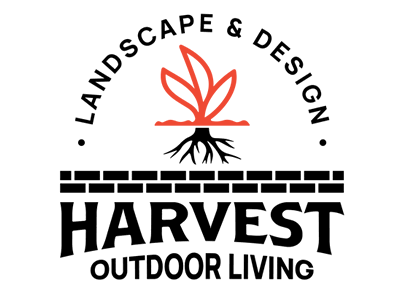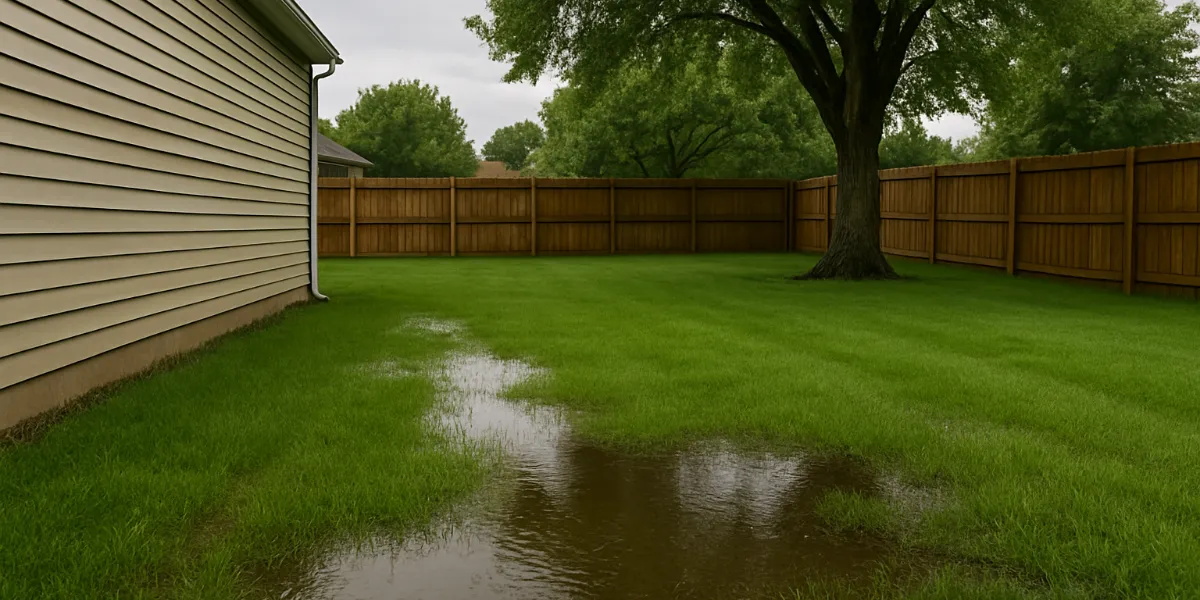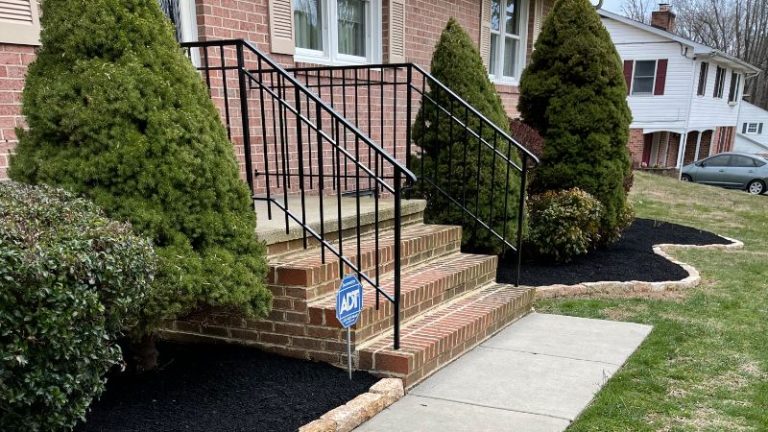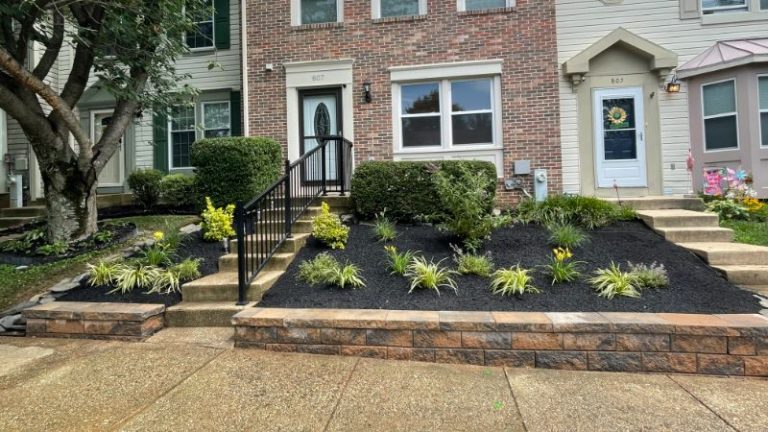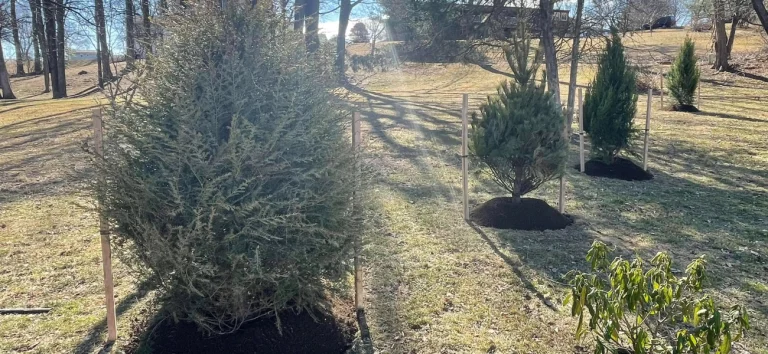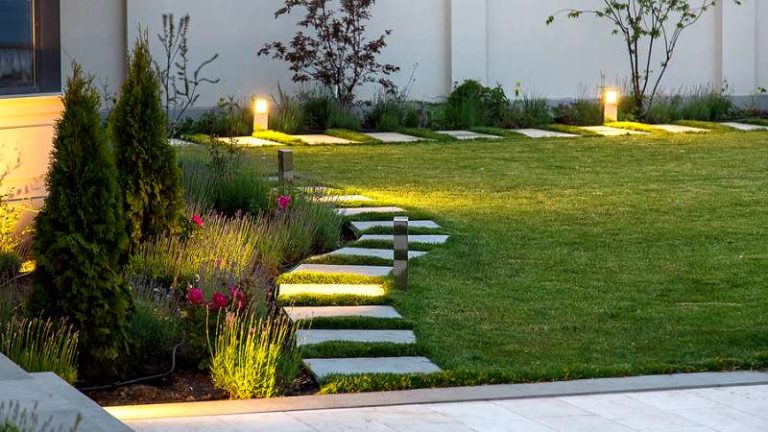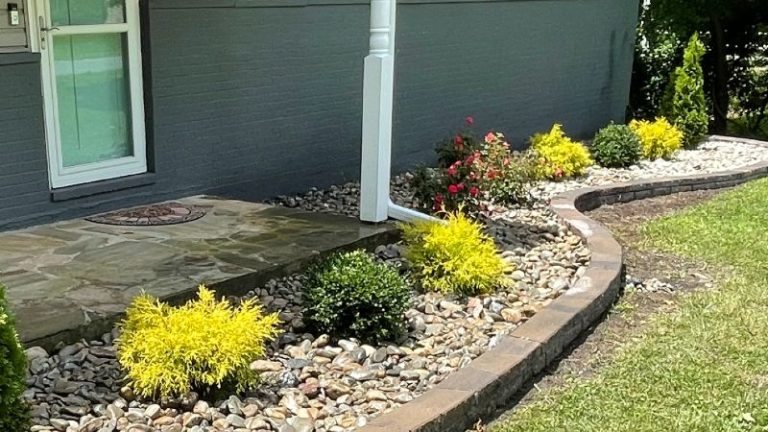What to Do if Your Lawn Floods After Every Rainstorm
Is your lawn turning into a swamp every time it rains? Persistent flooding can damage grass, drown plants, attract pests, and lead to long-term problems like soil erosion and foundation issues. If you’re tired of soggy soil and standing water, it’s time to get to the root of the problem—and fix it for good.
Why your lawn floods after heavy rain
Lawn flooding isn’t just an inconvenience—it’s a symptom of deeper drainage problems that could be harming your soil, grass, and even your home’s foundation. At Harvest Outdoor Living, we’ve helped dozens of homeowners in the Bel Air area solve recurring flooding issues by getting to the root of the problem, not just masking the symptoms.
Flooding typically starts with one or more of the following issues:
-
- Improper grading – One of the most common causes of lawn flooding is poor slope or elevation. If your yard isn’t graded correctly, rainwater can’t drain away from your home and will naturally settle in low-lying areas. Proper landscape grading, one of our core services, reshapes your yard to guide water safely away.
- Compacted soil – Soil that has been compressed over time, especially in high-traffic areas, loses its ability to absorb water. Instead of soaking in, rainwater sits on top of the surface. Soil conditioning and core aeration, which we can incorporate into your lawn restoration plan, help relieve compaction and restore healthy drainage.
- High clay content – Clay-heavy soil, common in parts of Maryland, holds water longer and drains much more slowly than loamy or sandy soils. In these cases, amending the soil, installing drainage systems, or even redesigning lawn areas may be necessary.
- Gutter and downspout issues – If your gutters or downspouts are clogged, broken, or improperly positioned, water from your roof can flood concentrated areas of your lawn. Our team can assess and recommend adjustments, including downspout extensions or pop-up emitters, as part of a larger drainage plan.
- Lack of drainage infrastructure – Many older or mass-built properties were never designed with proper stormwater management. Without features like French drains, dry creek beds, or subsurface drainage solutions, water has nowhere to go but across your lawn.
At Harvest Outdoor Living, we don’t just guess—we evaluate the slope, soil composition, runoff patterns, and landscape features to design a custom drainage solution that actually works for your property.
How to tell if poor drainage is the issue
Not every soggy yard is an emergency—but when water lingers after a rainstorm, it’s often a sign that something isn’t working beneath the surface. A healthy lawn should drain within 24 hours of typical rainfall. If yours doesn’t, you may be dealing with a drainage problem that needs professional attention.
Here are common red flags to watch for:
-
- Mushy, soft ground – If your lawn feels like a sponge underfoot or sinks slightly when you step on it, excess moisture may be trapped just below the surface. This can quickly lead to soil compaction, root rot, and lawn damage.
- Visible puddles or standing water – Large puddles that remain long after the rain ends—especially in low spots or near hardscape edges—are a clear sign water has nowhere to go. These areas are often prime candidates for grading adjustments or French drains.
- Water pooling near your foundation – Water accumulating near the base of your home is more than a nuisance—it’s a potential foundation risk. Improper grading, downspout placement, or lack of drainage solutions can lead to long-term structural issues. We often address this with downspout drainage extensions, regrading, or dry creek bed installations.
- Patches of dying grass or fungal growth – Grass that suddenly turns yellow or brown in circular patches might be drowning from poor drainage. Fungi thrive in overly wet conditions, and some species can kill grass quickly. Our team at Harvest Outdoor Living can determine whether soil moisture, pH, or compaction is to blame—and design a lawn restoration and drainage plan to bring it back to life.
- Erosion or exposed roots on slopes – If you notice soil washing away or plant roots sticking out, water runoff is likely moving too fast and without control. This often calls for erosion control solutions, such as retaining walls, groundcover plantings, or drainage swales to slow and redirect water safely.
At Harvest Outdoor Living, we don’t stop at surface symptoms. We look at the entire property—its topography, soil type, water flow patterns, and existing landscaping—to uncover the true cause of poor drainage. That’s how we ensure our drainage solutions aren’t just temporary fixes—they’re long-term improvements designed specifically for your yard.
Drainage solutions that actually work
Lawn flooding isn't a one-size-fits-all problem, and that’s why our team at Harvest Outdoor Living designs drainage plans that are customized for your property—not just based on what’s visible, but on what’s really causing the issue beneath the surface. The best drainage solution depends on factors like soil type, yard slope, rainfall patterns, and how your landscaping interacts with water.
Here are several proven solutions we use to keep lawns dry, healthy, and functional:
1. Landscape grading
One of the most effective ways to prevent lawn flooding is by correcting the grade of your yard. Improper slopes allow water to settle near your home or in low spots. Landscape grading reshapes the land to guide rainwater away from structures and into appropriate drainage zones.
-
-
- Ideal for properties where water pools in certain areas
- Often the first step before installing other systems
- Can be paired with lawn renovation, retaining walls, or swales for added effectiveness
-
At Harvest Outdoor Living, we use professional grading equipment and years of experience to ensure your lawn sheds water the way it should.
2. French drains
For areas where water tends to linger, especially in the middle of a lawn or at the bottom of a slope, a French drain can provide a powerful, hidden solution. This involves placing a perforated pipe in a trench filled with gravel, then covering it with soil or decorative stone.
-
-
- Redirects subsurface water away from saturated zones
- Ideal for heavy clay soil or areas where regrading isn't feasible
- Pairs well with gutter downspouts or sump pump discharge lines
-
We carefully plan each French drain installation to ensure long-term performance and minimal disruption to your landscape.
3. Dry creek beds
A dry creek bed is a decorative and functional feature designed to mimic a natural stream. While it may appear like a landscaping accent, it plays a critical role in capturing and channeling surface runoff during rainstorms.
-
-
- Adds texture and visual interest to your yard
- Provides controlled flow paths for water
- Can be integrated into broader landscape design projects
-
We custom-build dry creek beds using stone, boulders, and erosion-resistant groundcovers to blend seamlessly into your surroundings while protecting your property from stormwater damage.
4. Downspout extensions and pop-up emitters
Even the best gutter systems are only as effective as where they send water. If downspouts dump water too close to your home or into your lawn, that runoff can quickly cause pooling or erosion.
-
-
- Downspout extensions carry water further away from foundations and vulnerable lawn areas
- Pop-up emitters release water only when pressure builds, helping prevent soggy patches and erosion
- Perfect for tying into French drains or grading plans
-
Our team ensures every piece of your runoff system—from roof to ground—is working in harmony to protect your landscape.
5. Soil improvement and lawn renovation
Sometimes flooding isn’t caused by how water flows across your yard—but by what it encounters when it gets there. Soil compaction, high clay content, and shallow roots can all prevent proper absorption.
We offer complete lawn restoration services, including:
-
-
- Core aeration to loosen compacted soil and promote better drainage
- Soil amendments like compost or sand to improve infiltration
- Reseeding or overseeding with grass varieties that perform better in your yard's conditions
-
If necessary, we can also create a layered plan that includes grading, soil improvement, and drainage infrastructure—giving you a lawn that not only drains properly but also thrives long after the rain ends.
Real example: Fixing a soggy backyard in Bel Air
A homeowner in Bel Air came to us after every rainstorm left their backyard unusable for days. Our team regraded the yard, installed a French drain system, and added a dry creek bed to manage overflow. The result? A dry, lush lawn they could actually enjoy—rain or shine.
Why DIY fixes don’t go far enough
Store-bought solutions like “drainage tiles” or short downspout extensions may seem helpful but rarely solve the root issue. Without professional evaluation and grading, water will continue to find the path of least resistance—straight into your yard or basement.
Hiring an experienced landscaping contractor like Harvest Outdoor Living ensures your solution is long-term, code-compliant, and seamlessly integrated with the rest of your landscape.
Proudly serving Harford County and beyond
Harvest Outdoor Living offers expert drainage and landscaping solutions in:
-
- Bel Air
- Abingdon
- Aberdeen
- Churchville
- Fallston
- Forest Hill
- Havre De Grace
- Jarrettsville
- Perry Hall
- White Marsh
- Surrounding Harford County areas
Take the first step toward a dry, healthy lawn
Stop putting up with lawn flooding every time it rains.
If your lawn floods after every storm, we can help you reclaim your outdoor space with smart, proven drainage solutions.
Contact Harvest Outdoor Living today to schedule a consultation or request an estimate.
We proudly serve Bel Air and the surrounding areas with expert drainage, landscaping, and hardscaping services you can count on.
